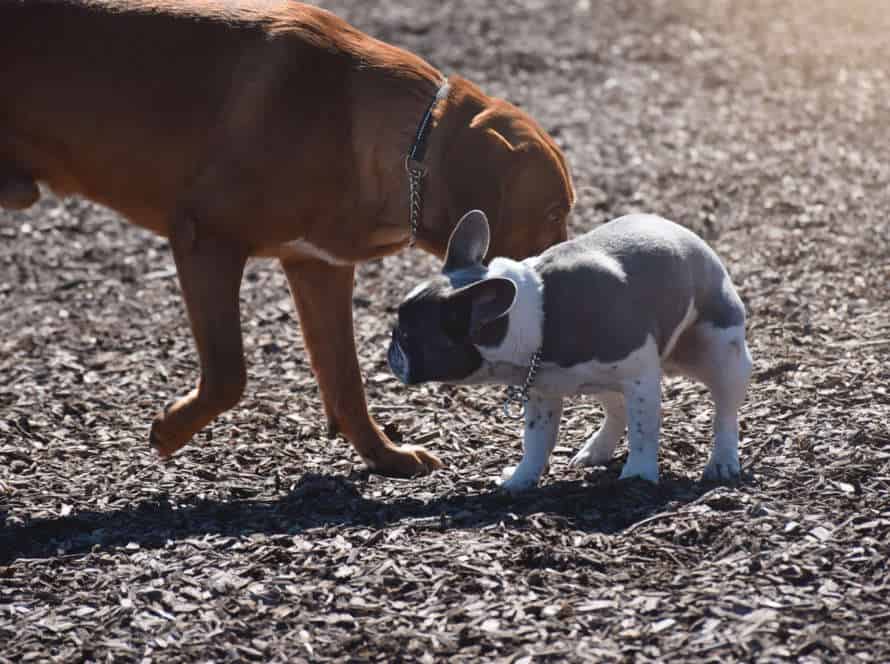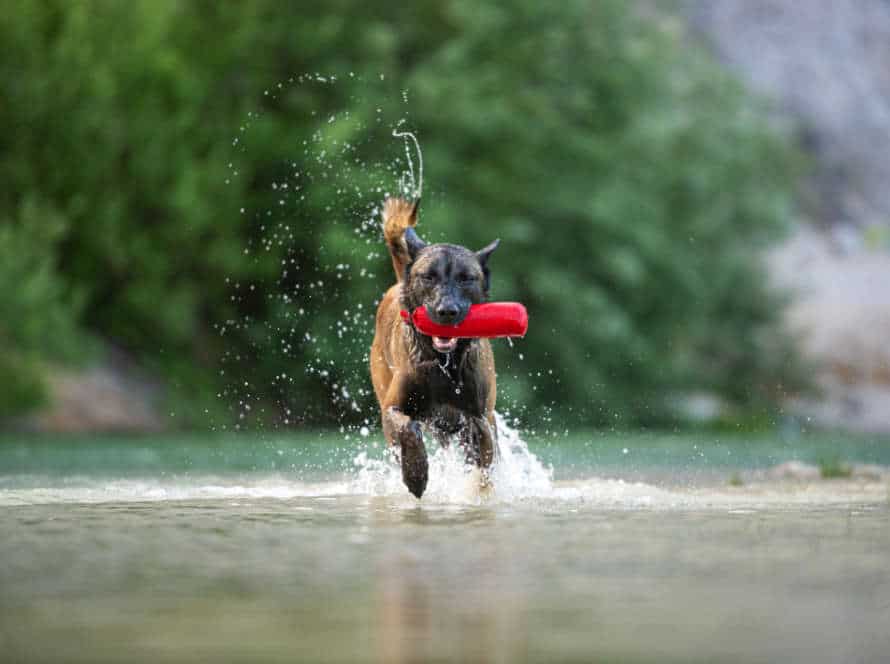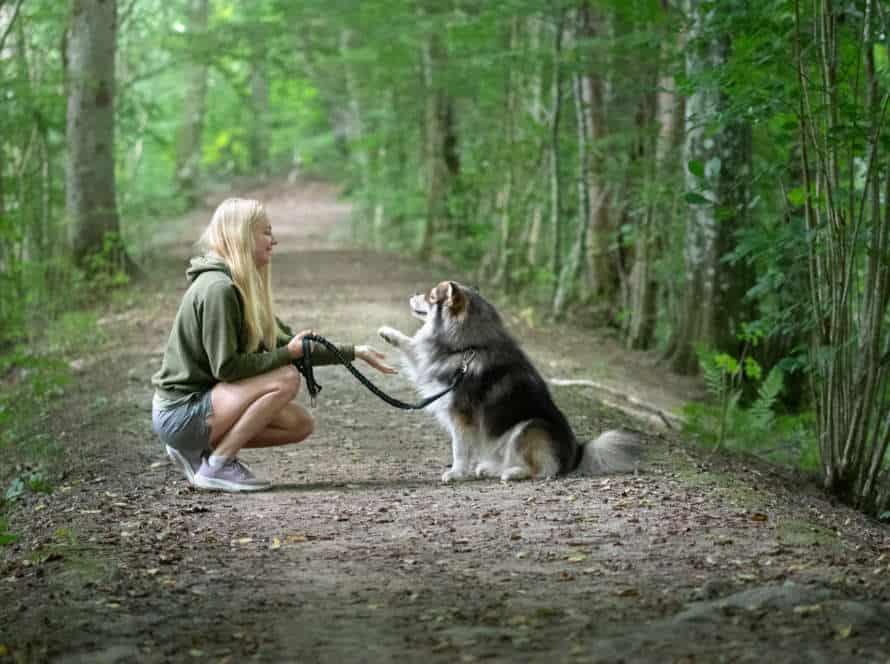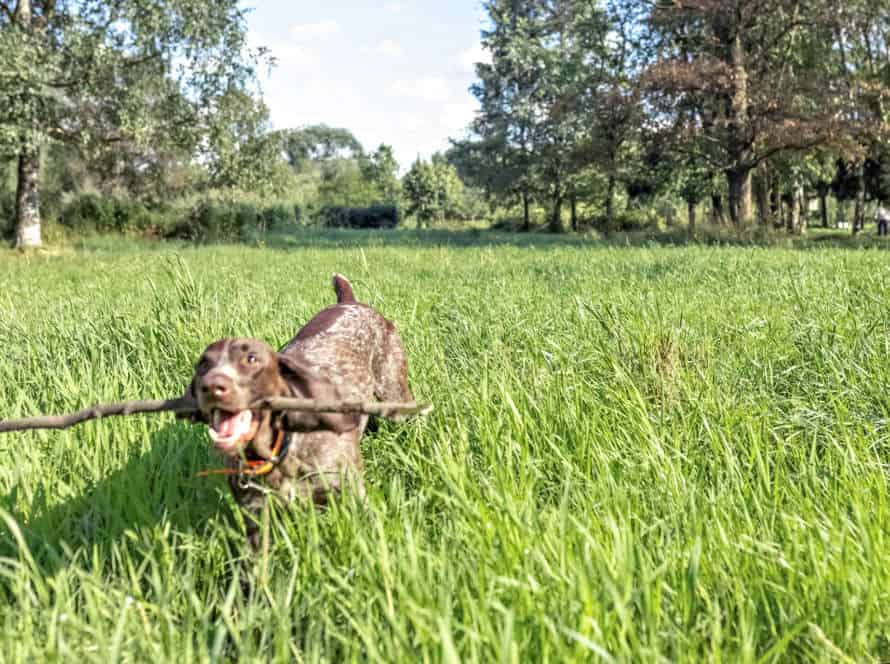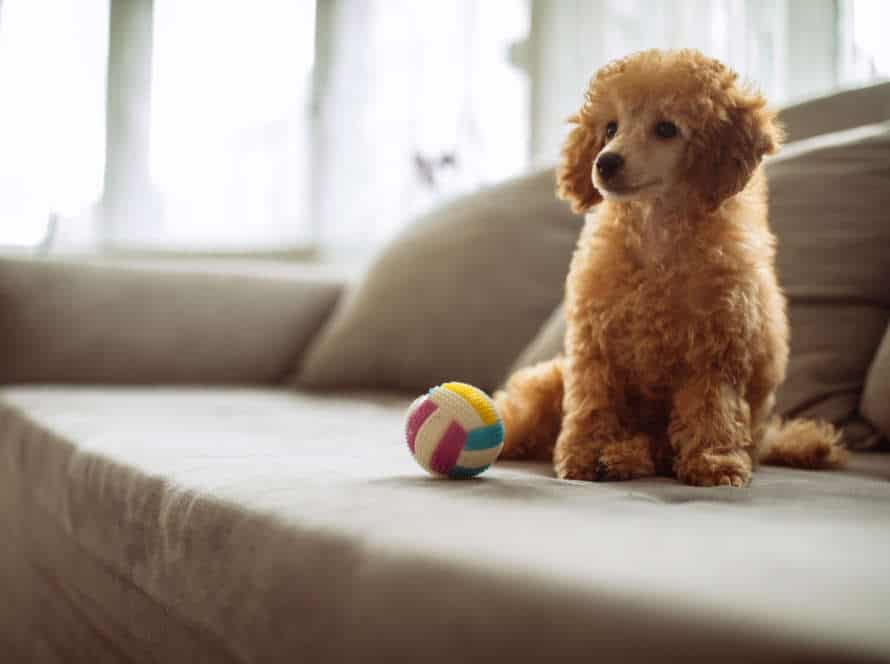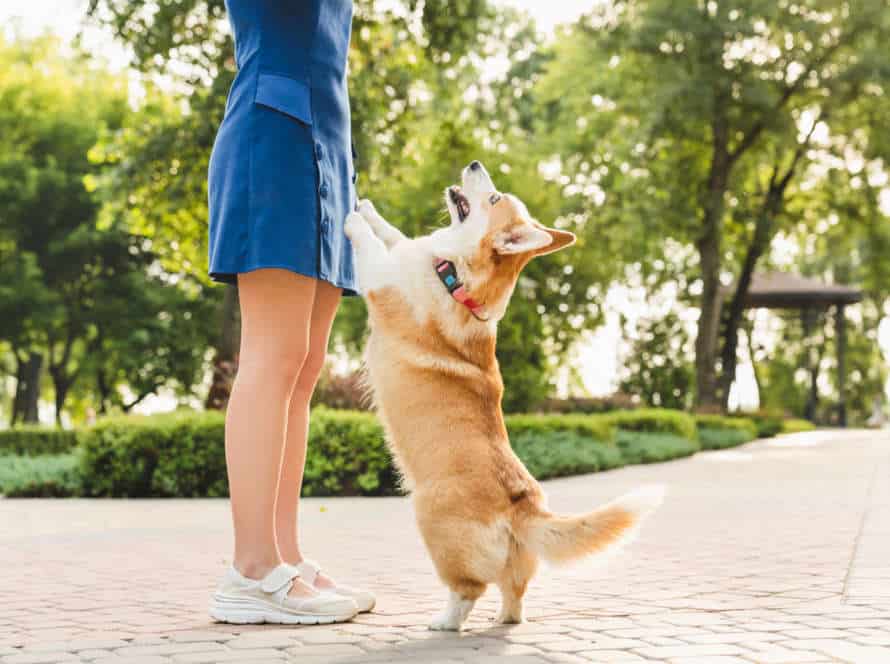Puppy Trick Training: Encouraging Focus and Patience
To train your pup to do tricks, it’s key to nurture focus and patience. Here are some tips to help you:
- Start in a peaceful, distraction-free area.
- Use treats or toys to praise good conduct and promote focus.
- Keep training short and upbeat. Little by little, increase the time and difficulty of tricks.
- Show your pup “stay” or “wait” before a trick. This will help with patience and alertness.
- If pup loses concentration or gets angry, take a break and try later.
Training your pup takes time and endurance. Appreciate the small successes and have fun with your furry pal!
Getting Started with Puppy Training
Puppies are not like older dogs. They need special care when it comes to training. Building trust and understanding between pup and trainer is first. Puppy trick training will help them focus and be patient.
Here are some tips for beginning your pup’s training:
- Start with basic commands such as sit, stay, come and heel.
- Use positive reinforcement such as treats and praise.
- Keep training sessions short and fun.
- Be consistent with your commands and training methods.
- Teach tricks such as shake, roll over and play dead to improve their focus.
- Be patient and don’t give up if they don’t get it right away.
Understand the importance of positive reinforcement
Positive reinforcement is a powerful way to teach puppies. It involves rewarding the pup for behaviors you want them to do again. This helps build the relationship between the pup and owner. Here are three benefits of using positive reinforcement:
- Pups stay focused and engaged.
- Training is fun and builds trust.
- Owners and pups understand each other better.
Encourage focus and patience in training with treats and toys. Start with easy tasks and make them harder as your pup learns. Remember to be patient, consistent, and positive. With patience and dedication, you’ll have a well-behaved pup! Pro Tip: Positive reinforcement requires patience and consistency.
Choose an appropriate rewards system
When starting pup training, selecting the perfect rewards system is vital. Reinforcing good behaviour with treats, admiration, and playtime will help your pup learn, obey, and form a strong bond with you.
Here are some tips for picking the right rewards system:
- Choose high-value treats that your pup loves, but only use them during training.
- Utilize verbal praise and patting to show approval.
- Include playtime as a reward for good behaviour.
- Be consistent with rewards and avoid punishment-based training methods.
- Every pup is unique, so experiment with different options to find what works best for your pup.
Start with basic commands such as sit and stay
Got a new pup? Start with basic commands like ‘sit‘ and ‘stay‘. Here are some tips to keep in mind when training your pup:
- Keep training short and frequent – start with 5-10 mins, then increase.
- Use treats and praise to motivate and reward your pup for good behaviour.
- Be consistent with commands and techniques – no confusion!
- Once they’ve got the basics, introduce other commands like ‘come‘, ‘heel‘ and ‘roll over‘ to keep them engaged.
- Most of all, be patient. With dedication and love, your pup will be a well-trained companion for years.
Fostering Focus
Puppy owners: we have a goal! Teach our furry friends focus. It’s helpful for behavior, and strengthens our bond. Plus, it encourages obedience. Good news! Puppy trick training is perfect for this.
Let’s explore how to use puppy trick training for focus and patience.
Begin with shorter training sessions
It’s key to start with short training sessions when teaching puppy tricks.
Here’s why: Puppies have short attention spans. Too long sessions can make them distracted or bored. Start with 5-10 minutes and your pup will learn better. As they get skilled & confident, you can lengthen the time.
Pro tip: Use yummy treats and positive reinforcement to keep pup motivated and focused.
Keep distractions to a minimum
Puppy trick training? Keep distractions to a minimum! Focus and patience are key. Here are some tips:
- Start in a quiet place.
- Use treats or clicker for good behavior.
- Train short and often.
- Step-by-step, increase distractions as pup gets comfortable.
- Be patient and consistent. Puppy will be grateful!
Build up to more challenging commands
Train your pup in new tricks with simple commands first. This makes them more attentive and compliant. Start with “sit,” “stay,” and “come.” Then, move on to more complex tricks like “shake,” “lie down,” and “roll over.”
Once your pup has mastered those, teach them trick combinations or add distractions to build focus.
Reward your pup with treats or praise when they do something good. Be consistent and patient throughout training to help them reach their full potential.
Teaching Patience
Teaching patience to your pup is essential! It builds a strong bond between you and your pup. Patience is a key skill your pup should learn early on. It helps keep them calm and focused while learning tricks. Patience also has a positive effect on your pup’s attitude and behavior. Let’s explore how to teach patience to your pup!
Start with simple waiting exercises
Training puppies in patience is essential. Here’s how to get started:
- Begin with easy waiting activities. Ask your pup to sit and wait for a treat, toy, or food bowl. Increase the waiting times and give rewards for focus.
- Use positive reinforcement. Give treats and compliments to your puppy when they show patience.
- Keep training brief. Practice patience exercises regularly to encourage good behavior.
- Make it more difficult. Once your pooch has mastered the basics, add distractions to the exercises to test their self-control and patience.
With practice and dedication, you can create an obedient pup who is able to show focus and patience.
Gradually increase the duration of waiting exercises
Patience is important to teach your puppy. But it can be tricky. To help them get better, gradually make their wait times longer. Here’s how:
- Start with simple waits like food or door opening.
- Say “Wait” or “Stay” to signal patience.
- Begin with short waits and get longer.
- Reward with treats and praise when they wait the specified time.
- Practice regularly.
Eventually, your pup will stay calm and focused despite distractions. Pro tip – Use a clicker for the waiting exercises.
Reinforce and reward good patience behaviors
Reinforce and reward good patience behaviors to teach your pup patience and focus. Here’s how:
- Give treats when your puppy waits for food or stays still during grooming.
- Practice patience exercises by asking pup to sit and stay, then increase wait time before rewarding.
- Use a calm voice and don’t show frustration; this can make pup anxious.
- Praise pup and give rewards to link patience to good outcomes.
- Remember: Patience training takes time and consistency. Be patient with your furry friend!
Tricks for Building Focus and Patience
Train your puppy to do tricks!
It’s a great way to boost focus and patience.
Break tricks down into simple parts. This makes it easier for your pup to learn and succeed. Then they’ll feel proud and confident.
Here are some tricks to help your pup gain focus and patience:
Use toys to encourage focus
Training your pup to focus and be patient – not an easy job! But it’s essential for good behaviour and obedience. Toys can help build focus and patience. Here are some tips to get you going:
- Interactive toys – the ones that need your pup to think and work for the reward. Treat-dispensing balls and puzzles are great ideas.
- Routine – set aside times for training and play with the toys. Helps pup learn to focus and be patient at these times.
- Reward good behaviour – praise or treat when pup successfully focuses on toy or waits for reward.
- Be patient – building focus and patience takes consistent practice, so stay patient with your pup.
Incorporate puzzle toys for mental stimulation
Puzzle toys are great for puppy training! They provide mental stimulation and help build their focus and patience. Benefits include:
- Mental Stimulation- Puzzles engage problem-solving, give accomplishment and keep them entertained.
- Satisfy Chewing Urges- Puzzles offer an outlet to prevent destructive behavior.
- Build Patience- Puzzles teach puppies to focus, be patient, and take their time to figure out the problem.
It’s important to pick the right puzzle toy for age and size and supervise playtime for safety. Tip: Start with simple puzzles and progress to more difficult ones.
Train new tricks to build focus and patience simultaneously
Train your pup with tricks for better focus and patience! Here’s three to get you started:
- “Wait” command teaches patience, by keeping a treat just out of reach and gradually increasing the wait time.
- “Watch me” command helps build focus, by giving your pup a treat when they make eye contact.
- “Spin” or “Twirl” command hones focus and patience, by holding a treat above their head and making a circular motion.
Keep training sessions positive and short to keep your pup engaged. With practice, these tricks can help your pup become more obedient and better-behaved.
Troubleshooting Common Puppy Training Issues
Training puppy dogs can be a tough job. You need to have lots of patience and stay consistent. It’s not unusual for pup’s to struggle with some parts of the training. Here’s a guide to the common problems and how to fix them:
Common training mistakes and how to avoid them
Training a puppy can be a tough task but it’s worth it. To make it successful, avoid the common errors. Here are a few of them:
- Inconsistent training: Set clear rules & regulations for your puppy.
- Skipping positive reinforcement: Reward your puppy for good behavior.
- Over-teaching commands: Don’t repeat commands too often.
- Impatience: Stay calm & patient. If frustrated, take a break.
- Lack of socialization: Let your pup interact with other animals.
Focus on positive reinforcement, consistency & patience. That way, you can train your pup to be obedient & happy.
Addressing puppies who display stubbornness or defiance
If your pup is being stubborn or defiant during training, act quickly! Here are some tips to help focus and encourage patience:
- Break the trick into smaller steps.
- Reward progress with treats or playtime.
- Take breaks often – pups have short attention spans.
- Be consistent with commands.
- Don’t yell – this may cause anxiety.
Patience and consistency will help your pup learn tricks.
Seeking professional training assistance when needed
Puppy training can be tough. It’s best to get help from professionals. Not all puppies are the same. Some may have problems like barking, biting, or chewing furniture. A dog trainer can give tailored solutions that fit your puppy’s personality and speed of learning. They can also help if you want to teach your puppy tricks. Training needs time, patience, and effort. If you need help, don’t hesitate to ask a pro. Investing in training now will save you trouble in the future. Enjoy having a well-behaved, happy pup!
Frequently Asked Questions
What is puppy trick training?
Puppy trick training involves teaching your puppy various tricks or commands to improve their behavior and obedience.
Why is focus important in puppy trick training?
Focus is crucial in puppy trick training as it helps your puppy stay attentive and engaged during the process, making it easier for them to learn and follow through with the tricks.
How can I encourage focus during puppy trick training?
To encourage focus, start with simple tricks and gradually increase the difficulty level. Use treats or toys as positive reinforcement and keep sessions short and fun to avoid losing your puppy’s attention.
What role does patience play in puppy trick training?
Patience is key in puppy trick training as puppies can take time to learn and perfect new tricks. It’s important to remain calm and consistent, and avoid getting frustrated or giving up too quickly.
What are some common puppy tricks to teach?
Some common puppy tricks to teach include sit, stay, come, lie down, shake, roll over, and play dead.
How often should I practice puppy trick training?
Consistency is key in puppy trick training, so it’s recommended to practice for a few minutes a day, preferably at the same time every day. Regular practice will help your puppy remember the tricks and improve their obedience in the long run.


